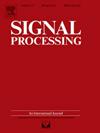Adaptive robust MIMO radar target localization via capped Frobenius norm
IF 3.4
2区 工程技术
Q2 ENGINEERING, ELECTRICAL & ELECTRONIC
引用次数: 0
Abstract
Most of the existing algorithms for multiple-input multiple-output radar target localization assume that the bistatic range measurements are contaminated by one certain kind of noise only, such as Gaussian noise and impulsive noise. However, when the practical noise violates the original assumed distribution, their localization performance degrades severely. Therefore, adaptive and robust localization algorithms that can achieve good localization performance under both Gaussian and impulsive noise are highly desirable. In this paper, we exploit the truncated least squares loss function called capped Frobenius norm (CFN) to resist outliers. An adaptive update scheme is developed to automatically determine the upper bound of CFN using the normalized median absolute deviation. Then, the nonconvex and nonsmooth CFN-based formulation is transformed into a regularized -norm optimization problem based on the half-quadratic theory. The alternating optimization (AO) algorithm is adopted as the solver, and closed-form solutions for both subproblems are derived. We also show that the sequence of objective function value generated by the devised algorithm converges. Experimental results verify the superiority of the proposed algorithm over several existing algorithms in terms of localization accuracy under impulsive noise. Furthermore, the devised algorithm can attain comparable performance to -norm based methods without tweaking hyperparameters under Gaussian noise.
基于上限Frobenius范数的自适应鲁棒MIMO雷达目标定位
现有的多输入多输出雷达目标定位算法大多假设双基地距离测量值只受到某一种噪声的污染,如高斯噪声和脉冲噪声。然而,当实际噪声违背了原假设分布时,其定位性能会严重下降。因此,在高斯噪声和脉冲噪声下都能获得良好定位性能的自适应鲁棒定位算法是非常需要的。在本文中,我们利用截断的最小二乘损失函数称为上限Frobenius范数(CFN)来抵抗异常值。提出了一种利用归一化中值绝对偏差自动确定CFN上界的自适应更新方案。然后,将基于非凸非光滑cfn的公式转化为基于半二次理论的正则化2-范数优化问题。采用交替优化算法作为求解器,推导了两个子问题的闭型解。结果表明,该算法生成的目标函数值序列是收敛的。实验结果验证了该算法在脉冲噪声下的定位精度优于现有的几种算法。此外,在高斯噪声下,该算法在不调整超参数的情况下可以获得与基于2-范数的方法相当的性能。
本文章由计算机程序翻译,如有差异,请以英文原文为准。
求助全文
约1分钟内获得全文
求助全文
来源期刊

Signal Processing
工程技术-工程:电子与电气
CiteScore
9.20
自引率
9.10%
发文量
309
审稿时长
41 days
期刊介绍:
Signal Processing incorporates all aspects of the theory and practice of signal processing. It features original research work, tutorial and review articles, and accounts of practical developments. It is intended for a rapid dissemination of knowledge and experience to engineers and scientists working in the research, development or practical application of signal processing.
Subject areas covered by the journal include: Signal Theory; Stochastic Processes; Detection and Estimation; Spectral Analysis; Filtering; Signal Processing Systems; Software Developments; Image Processing; Pattern Recognition; Optical Signal Processing; Digital Signal Processing; Multi-dimensional Signal Processing; Communication Signal Processing; Biomedical Signal Processing; Geophysical and Astrophysical Signal Processing; Earth Resources Signal Processing; Acoustic and Vibration Signal Processing; Data Processing; Remote Sensing; Signal Processing Technology; Radar Signal Processing; Sonar Signal Processing; Industrial Applications; New Applications.
 求助内容:
求助内容: 应助结果提醒方式:
应助结果提醒方式:


